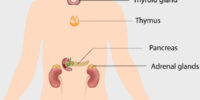Can Acupuncture Provide Effective Pain Management?

Acupuncture has been practiced for centuries as a pain management technique. This article explores the efficacy of acupuncture in relieving pain, focusing on its historical roots and the scientific basis for its effectiveness.
It also examines the types of pain that can be managed through acupuncture and its role in chronic pain management. Additionally, the article delves into the benefits and limitations of acupuncture for pain relief and discusses how acupuncture sessions are conducted.
Finally, it considers the potential integration of acupuncture with other pain management approaches.
Key Takeaways
- Acupuncture has a long history and is now practiced and researched worldwide.
- Acupuncture stimulates the release of endorphins and activates specific nerves in the body to regulate pain signals and promote healing.
- Acupuncture is effective in managing chronic headaches, osteoarthritis, and menstrual cramps.
- Integrating acupuncture with other approaches such as medication and physical therapy can enhance pain relief and minimize side effects.
The History of Acupuncture as a Pain Management Technique
The history of acupuncture as a pain management technique dates back thousands of years in ancient China. Acupuncture is believed to have originated during the Neolithic Age, around 6000 BCE.
The development of acupuncture as a medical practice can be attributed to the ancient Chinese medical text, Huangdi Neijing (Yellow Emperor’s Inner Canon), which was compiled during the Warring States period (476-221 BCE). This text describes the theory behind acupuncture, including the concept of qi and meridians, as well as the various acupuncture points on the body.
Over time, acupuncture techniques were refined and expanded upon, with the development of specialized needles, the use of herbal medicine in conjunction with acupuncture, and the integration of acupuncture into traditional Chinese medicine.
Today, acupuncture continues to be practiced and researched worldwide for its potential as a pain management technique.
Understanding the Science Behind Acupuncture’s Effectiveness
One way to gain insight into the efficacy of acupuncture is by exploring the scientific mechanisms that underlie its effects. Acupuncture research has shown that this ancient practice has a number of physiological effects on the body. These effects include:
- Release of endorphins: Acupuncture stimulates the release of endorphins, which are natural pain relievers produced by the body. This can help reduce pain and promote a sense of well-being.
- Activation of the nervous system: Acupuncture stimulates specific nerves in the body, which can help regulate pain signals and promote healing.
- Modulation of inflammation: Studies have shown that acupuncture can help reduce inflammation in the body, which is a common cause of pain and discomfort.
Understanding these scientific mechanisms can provide a deeper understanding of how acupuncture works and why it may be an effective pain management technique.
Further research in this field can help refine and optimize acupuncture treatments for various conditions.
Types of Pain That Can Be Managed Through Acupuncture
Various types of pain, such as chronic headaches, osteoarthritis, and menstrual cramps, can be effectively managed through the application of acupuncture techniques.
Acupuncture has been shown to provide significant headache relief by targeting specific points on the body, known as acupoints, which stimulate the release of endorphins and other natural pain-relieving substances. This can help alleviate the intensity and frequency of headaches.
Additionally, acupuncture has been found to be beneficial in managing post-operative pain. Studies have shown that acupuncture can reduce the need for strong pain medications and improve overall pain control in individuals recovering from surgery.
The precise mechanisms by which acupuncture exerts its pain-relieving effects are still being investigated, but it is believed to involve the modulation of neurotransmitters, immune responses, and the activation of endogenous pain inhibitory systems.
Further research is needed to fully understand the potential of acupuncture in pain management.
The Role of Acupuncture in Chronic Pain Management
Chronic pain can be effectively alleviated through the utilization of acupuncture techniques. Acupuncture, a traditional Chinese medicine practice, has gained recognition as a viable option for pain management. Extensive acupuncture research has shown promising results in relieving chronic pain, making it a popular choice among individuals seeking alternative therapies.
To understand the role of acupuncture in chronic pain management, consider the following:
- Acupuncture involves the insertion of thin needles into specific points on the body to stimulate nerve fibers and release endorphins, which are natural pain-relieving chemicals.
- Acupuncture reduces pain perception by modulating the central nervous system and promoting blood circulation.
- Acupuncture has been found to be effective in managing various types of chronic pain, including back pain, osteoarthritis, migraines, and fibromyalgia.
Overall, acupuncture offers a potential alternative approach to chronic pain management, supported by scientific research and positive patient outcomes.
Exploring the Benefits and Limitations of Acupuncture for Pain Relief
Exploring the benefits and limitations of acupuncture for pain relief requires a systematic evaluation of its effects on different types of pain conditions.
Acupuncture is often used as an alternative therapy for pain management, particularly in cases where conventional treatments have failed or produced undesirable side effects. Several studies have suggested that acupuncture may provide relief for various types of pain, including chronic pain, musculoskeletal pain, and postoperative pain.
It is believed that acupuncture stimulates the release of endorphins, which are natural painkillers, and modulates the central nervous system to alleviate pain. However, the effectiveness of acupuncture for pain relief is still a matter of debate, as some studies have shown inconsistent results.
Furthermore, potential side effects of acupuncture, although rare, include bruising, bleeding, and infection at the needle insertion site. Therefore, further research is needed to fully understand the benefits and limitations of acupuncture as a treatment option for pain relief, and to explore alternative therapies that may complement or enhance its effects.
How Acupuncture Sessions Are Conducted for Pain Management
This discussion will focus on two key aspects of acupuncture sessions for pain management:
- Needle placement and technique: Needle placement and technique refer to the specific locations on the body where acupuncture needles are inserted and the methods used to stimulate the points. Understanding the significance of these factors can provide insight into the efficacy of acupuncture in pain management.
- Duration and frequency: Additionally, the duration and frequency of acupuncture sessions play a crucial role in determining its effectiveness. The duration of each session and the frequency of sessions can vary based on the individual’s condition and treatment goals.
These two aspects, needle placement and technique, and duration and frequency, are important considerations when utilizing acupuncture for pain management.
Needle Placement and Technique
Needle placement and technique in acupuncture are important factors that may contribute to the effectiveness of pain management.
The practice of acupuncture involves the insertion of thin needles into specific points on the body. The precise placement of these needles is crucial for targeting the underlying pain and promoting the flow of energy, known as Qi. Acupuncturists carefully select points along meridians, which are pathways through which Qi flows. They consider factors such as the patient’s symptoms, constitution, and the nature of the pain.
Additionally, the technique of needle insertion plays a significant role in acupuncture’s effectiveness. Factors such as angle, depth, and manipulation of the needle can influence the outcomes. A skilled acupuncturist will use appropriate needle placement and technique to ensure optimal pain management results.
Duration and Frequency
Duration and frequency are important considerations when implementing acupuncture as a therapeutic intervention. Duration management refers to the length of time a single acupuncture session lasts, while frequency control pertains to the number of sessions scheduled over a specific time period. Both factors play a crucial role in determining the efficacy of acupuncture treatment.
Research suggests that longer treatment durations may lead to better pain relief outcomes. Furthermore, the frequency of acupuncture sessions can vary depending on the individual’s condition, with some patients benefitting from more frequent treatments initially and then transitioning to less frequent sessions as their symptoms improve.
However, it is important to note that there is no definitive consensus on the optimal duration and frequency of acupuncture treatment, as these factors can vary depending on the individual’s response and the nature of their condition. Therefore, individualized treatment plans and regular reassessment are essential for effective pain management through acupuncture.
Integrating Acupuncture With Other Pain Management Approaches
In the field of pain management, integrating acupuncture with other approaches has been explored as a potential method. This integration aims to enhance the overall effectiveness of pain management strategies by combining the benefits of acupuncture with other established treatments.
Two common approaches include integrating acupuncture with medication and integrating acupuncture with physical therapy.
- Integrating Acupuncture with Medication: By combining acupuncture with medication, patients may experience synergistic effects that lead to improved pain relief. Acupuncture can help reduce the need for higher medication doses, minimizing potential side effects while maximizing pain control.
- Integrating Acupuncture with Physical Therapy: The combination of acupuncture and physical therapy can provide a comprehensive approach to pain management. Acupuncture may help alleviate pain and reduce inflammation, while physical therapy can improve mobility, strength, and function.
Overall, integrating acupuncture with other pain management approaches has the potential to offer a more holistic and effective treatment strategy for individuals suffering from chronic pain.
Frequently Asked Questions
Is Acupuncture a Safe and Effective Treatment for All Types of Pain?
The effectiveness and safety of acupuncture as a treatment for all types of pain warrant further investigation. Research is needed to determine its potential benefits, risks, and appropriate application in clinical settings.
How Long Does It Typically Take to Experience Pain Relief From Acupuncture?
The duration of pain relief from acupuncture varies depending on various factors such as the individual’s condition, the severity of the pain, and the frequency of acupuncture sessions. Studies have shown that acupuncture can be effective in providing pain relief.
Are There Any Potential Side Effects or Risks Associated With Acupuncture for Pain Management?
Potential side effects and risks associated with acupuncture for pain management include bruising, bleeding, infection, nerve damage, and organ injury. Additionally, there is a small risk of pneumothorax, fainting, and allergic reactions to acupuncture needles.
Can Acupuncture Be Used as a Standalone Treatment or Is It Typically Combined With Other Pain Management Approaches?
Acupuncture is commonly used as a complementary therapy for pain management, often combined with other approaches. It is not typically used as a standalone treatment. Other alternative pain management techniques may also be utilized.
Is Acupuncture Covered by Insurance for Pain Management Purposes?
Insurance coverage for acupuncture as an alternative treatment for pain management is a subject of inquiry. Assessing whether acupuncture is covered by insurance for pain management purposes requires an examination of relevant policies and regulations.








